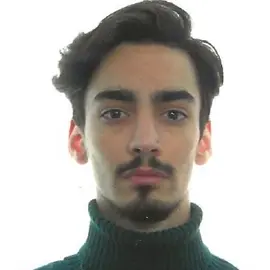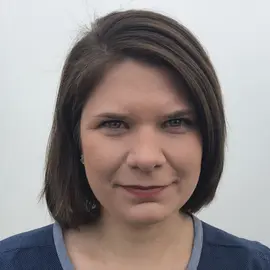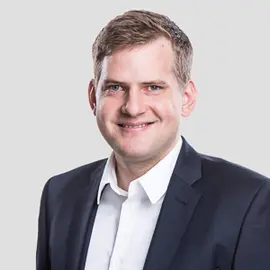Machine Perception and Cognition Group

“AI is THE key technology of the digital transformation, across sectors and industries, with major effects on our societies. Our research thus makes major contributions to the development of robust and trustworthy AI methods, and we enthusiastically teach their safe implementation and application.”
Fields of expertise

- Pattern recognition with deep learning
- Machine perception, computer vision and speaker recognition
- Neural system development
The MPC group conducts pattern recognition research, working on a wide variety of tasks relating to image, audio, and signal data per se. We focus on deep neural network and reinforcement learning methodology, inspired by biological learning. Each task we study has its own learning target (e.g., detection, classification, clustering, segmentation, novelty detection, control) and corresponding use case (e.g., predictive maintenance, speaker recognition for multimedia indexing, document analysis, optical music recognition, computer vision for industrial quality control, automated machine learning, deep reinforcement learning for automated game play or building control), which in turn sheds light on different aspects of the learning process. We use this experience to create increasingly general AI systems built on neural architectures.
Services
- Insight: keynotes, trainings
- AI consultancy: workshops, expert support, advise, technology assessment
- Research and development: small to large-scale collaborative projects, third party-funded research, student projects, commercially applicable prototypes
Team
Head of Research Group
Projects
-
MobileMall
-
SODES: Swiss Open Data Exploration System
In recent years, national and international institutions, governments and NGOs have made large amounts of data publicly available: there exist literally thousands of open data sources, with temperature measurements, stock market prices, population and income statistics etc. However, most open data sets are provided ...
-
Talkalyzer
The aim of this project is to develop a demonstrator in the form of an Android app, which can visualize the speeches of two interlocutors in real time. This should enable a superior to recognize, for example, whether he or she talks too much in an employee appraisal interview or whether the interview is balanced.In ...
Publications
-
Dashti, Ali; Stadelmann, Thilo; Kohl, Thomas,
2024.
Machine learning for robust structural uncertainty quantification in fractured reservoirs.
Geothermics.
120(103012).
Available from: https://doi.org/10.1016/j.geothermics.2024.103012
-
Yan, Peng; Abdulkadir, Ahmed; Aguzzi, Giulia; Schatte, Gerrit A.; Grewe, Benjamin F.; Stadelmann, Thilo,
2024.
In:
11th IEEE Swiss Conference on Data Science (SDS), Zurich, Switzerland, 30-31 May 2024.
ZHAW Zürcher Hochschule für Angewandte Wissenschaften.
Available from: https://doi.org/10.21256/zhaw-30430
-
Meyer, Benjamin; Stadelmann, Thilo; Lüthi, Marcel,
2024.
ScalaGrad : a statically typed automatic differentiation library for safer data science [paper].
In:
11th IEEE Swiss Conference on Data Science (SDS), Zurich, Switzerland, 30-31 May 2024.
ZHAW Zürcher Hochschule für Angewandte Wissenschaften.
Available from: https://doi.org/10.21256/zhaw-30408
-
Tuggener, Lukas; Sager, Pascal; Taoudi-Benchekroun, Yassine; Grewe, Benjamin F.; Stadelmann, Thilo,
2024.
So you want your private LLM at home? : a survey and benchmark of methods for efficient GPTs [paper].
In:
11th IEEE Swiss Conference on Data Science (SDS), Zurich, Switzerland, 30-31 May 2024.
ZHAW Zürcher Hochschule für Angewandte Wissenschaften.
Available from: https://doi.org/10.21256/zhaw-30279
-
Jermain, Peter R.; Oswald, Martin; Langdun, Tenzin; Wright, Santana; Khan, Ashraf; Stadelmann, Thilo; Abdulkadir, Ahmed; Yaroslavsky, Ann N.,
2024.
Rapid optical cytology with deep learning-based cell segmentation for diagnosis of thyroid lesions [paper].
In:
Proceedings of the 2024 Optica Biophotonics Congress: Biomedical Optics.
Optica Biophotonics Congress: Biomedical Optics, Fort Lauderdale, USA, 7-10 April 2024.
Optica Publishing Group.
Available from: https://doi.org/10.21256/zhaw-29674
Other releases
| When | Type | Content |
|---|---|---|
| 2023 | Extended Abstract | Thilo Stadelmann. KI als Chance für die angewandten Wissenschaften im Wettbewerb der Hochschulen. Workshop (“Atelier”) at the Bürgenstock-Konferenz der Schweizer Fachhochschulen und Pädagogischen Hochschulen 2023, Luzern, Schweiz, 20. Januar 2023 |
| 2022 | Extended Abstract | Christoph von der Malsburg, Benjamin F. Grewe, and Thilo Stadelmann. Making Sense of the Natural Environment. Proceedings of the KogWis 2022 - Understanding Minds Biannual Conference of the German Cognitive Science Society, Freiburg, Germany, September 5-7, 2022. |
| 2022 | Open Reserach Data | Felix M. Schmitt-Koopmann, Elaine M. Huang, Hans-Peter Hutter, Thilo Stadelmann, and Alireza Darvishy. FormulaNet: A Benchmark Dataset for Mathematical Formula Detection. One unsolved sub-task of document analysis is mathematical formula detection (MFD). Research by ourselves and others has shown that existing MFD datasets with inline and display formula labels are small and have insufficient labeling quality. There is therefore an urgent need for datasets with better quality labeling for future research in the MFD field, as they have a high impact on the performance of the models trained on them. We present an advanced labeling pipeline and a new dataset called FormulaNet. At over 45k pages, we believe that FormulaNet is the largest MFD dataset with inline formula labels. Our dataset is intended to help address the MFD task and may enable the development of new applications, such as making mathematical formulae accessible in PDFs for visually impaired screen reader users. |
| 2020 | Open Research Data | Lukas Tuggener, Yvan Putra Satyawan, Alexander Pacha, Jürgen Schmidhuber, and Thilo Stadelmann, DeepScoresV2. The DeepScoresV2 Dataset for Music Object Detection contains digitally rendered images of written sheet music, together with the corresponding ground truth to fit various types of machine learning models. A total of 151 Million different instances of music symbols, belonging to 135 different classes are annotated. The total Dataset contains 255,385 Images. For most researches, the dense version, containing 1714 of the most diverse and interesting images, is a good starting point. |








